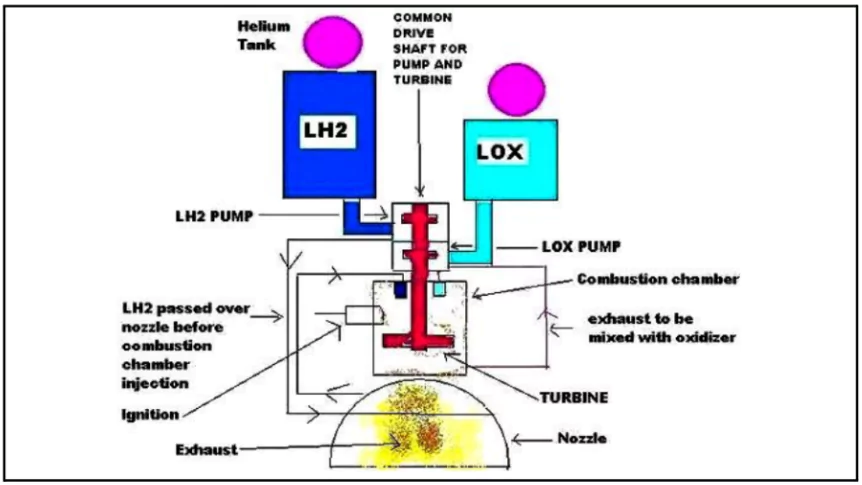ISRO achieved a significant milestone with the sea-level hot test of the CE20 cryogenic engine, conducted at the ISRO Propulsion Complex, Mahendragiri, Tamil Nadu.
About CE20 Cryogenic Engine
- The CE20 cryogenic engine is a rocket engine that uses liquefied gases as both fuel and oxidizer.
- These gases are kept at extremely low temperatures to maintain their liquid state.
 Developed by the Liquid Propulsion Systems Centre, the CE20 engine powers the upper stage of the Launch Vehicle Mark-3 (LVM-3)
Developed by the Liquid Propulsion Systems Centre, the CE20 engine powers the upper stage of the Launch Vehicle Mark-3 (LVM-3)- Fuel and Oxidizer Used
- Liquid Oxygen (LOX): Acts as the oxidizer. It liquefies at -183°C.
- Liquid Hydrogen (LH2): Serves as the fuel which liquefies at -253°C.
- The reaction between LOX and LH2 generates thrust for propulsion.
- Features
- Engine Restart Capability: Equipped with a multi-element igniter, enabling the engine to restart mid-mission, crucial for missions like Gaganyaan.
- This test validated ISRO’s ability to perform vacuum ignition without nozzle closure, advancing its cryogenic propulsion capabilities.
- Nozzle Protection System: Prevents flow separation in the nozzle and reduces vibrations enhancing performance and simplifies testing procedures.
- High Efficiency: Provides increased thrust and enhances payload capacity.
- Applications: Primarily used in the upper stages of rockets, where high efficiency is essential for placing satellites or spacecraft into orbit.
- The engine, initially qualified for 19 tonnes of thrust, has been upgraded to:
- 20 tonnes for the Gaganyaan mission, India’s first manned spaceflight.
- 22 tonnes for the C32 stage, enhancing the payload capacity of the LVM3 rocket.
Enroll now for UPSC Online Classes
Other Cryogenic Engines Used by ISRO
- KVD-1: Supplied by the Soviet Union in the 1980s.
- Served as the foundation for India’s cryogenic engine development.
- CE-7.5: An indigenous cryogenic engine developed by India.
- Based on the design of the KVD-1.
- Only six countries have developed their own cryogenic engine technology:
-
- United States, France/European Space Agency, Russia, China, Japan and India.
Future Prospects
- The test paves the way for improved cryogenic engine testing methods and supports future missions requiring high-thrust capabilities.
- The enhancements contribute to India’s ambitions for manned space exploration and heavier payload launches.
![]() 14 Dec 2024
14 Dec 2024

 Developed by the Liquid Propulsion Systems Centre, the CE20 engine powers the upper stage of the Launch Vehicle Mark-3 (LVM-3)
Developed by the Liquid Propulsion Systems Centre, the CE20 engine powers the upper stage of the Launch Vehicle Mark-3 (LVM-3)